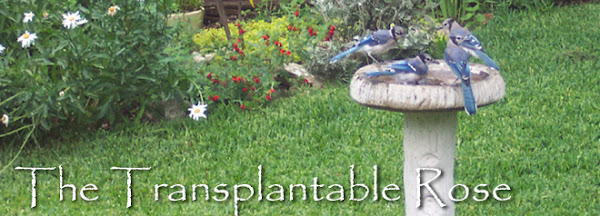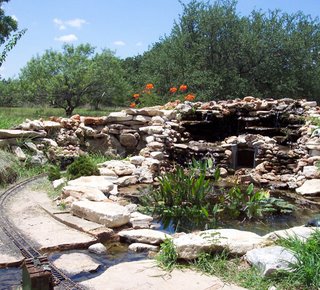Here's how our hypertufa trough looked in July of 1996. This trough is over 10 years old, originally made for our Chicago-area front garden and used for annuals that needed good drainage, like Portulaca. It’s been through 4 Illinois winters with sub-zero temperatures, spent another 5 years on a south-facing Texas deck with temperatures ranging from 116º down to 12º, and now rests on a sunny area of decomposed granite. Internal layers of chicken wire gave it enough strength to survive moving vans and freeze & thaw cycles.
Here is our Austin herb garden, a few steps from the kitchen. The old trough at the left now holds a prostate Rosemary and some thyme. To its right, a trough built in 2005 holds Mexican Mint Marigold, Tagetes lucida, and a lime-scented Thyme. Behind them at far left is a taller pot, made about 1998, containing an upright Rosemary that was mentioned in one of my old garden diaries.

When I bought this plant in Illinois, the date was Sept 25, 1991, it was a 3-inch seedling from the grocery store, and I paid all of 58 cents. Rosemary is hardy in Texas, but in Illinois this herb spent 8 winters on a south-facing windowsill, stems pressed against the glass to keep it cool without actually letting it freeze.
Out of camera range, another large trough holds cooking sage & a scented geranium, and we have a few tabletop-size hypertufa troughs, too. One of the small ones dates from 1996; the others were made recently. I like to use the small ones for different kinds of sedum.























